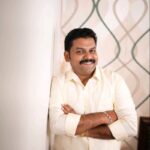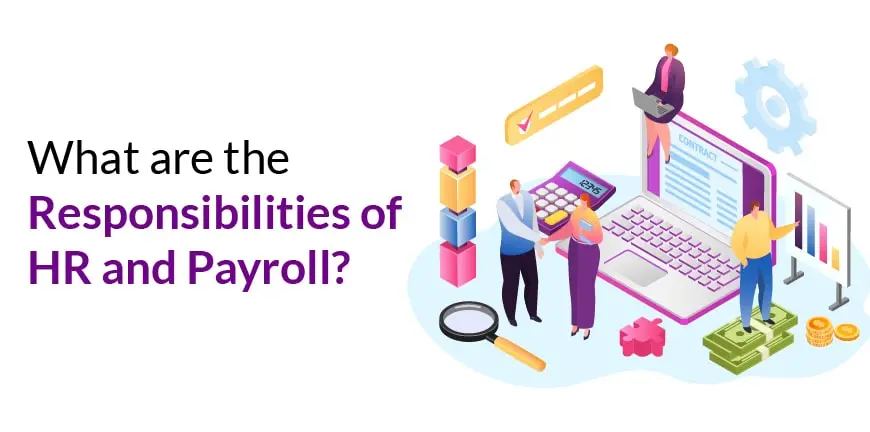
10 Steps to Create a Recruitment Plan for Your Business
10/04/2024
How Private Aerospace Companies Are Hiring for the Future?
11/04/2024HR and Payroll are two separate departments (or teams) with related responsibilities. They both manage employee needs, and therefore, they share a lot of information. HR handles employee wellness and performance, while a payroll service team handles the salary and additional benefits the company owes to the employee after withholdings.
What is the payroll process in HR?
The payroll process in HR involves maintaining employee data associated with salaries to credit them on time via a check or a bank transfer. The payroll process is generally managed by a separate team and not by HR. They may also use a payroll system to manage this. The payroll service team also takes care of the compliance associated with the payroll, though it is possible there could be a separate compliance team as well.
What are Human Resource Responsibilities?
The HR team has so many responsibilities. Some of these responsibilities are discussed below, especially in connection with payroll. But before we go there, let’s list the people in the HR team handling a few aspects of payroll and all the necessary aspects of HR.
People in the HR Team:
1. Head of HR
The HR Head manages the daily functioning of the HR team. He/she is responsible for overseeing the activities undertaken and deciding the stakeholders in recruitment, employee management and wellness, and compliance.
2. HR Manager
The HR manager safeguards employee records and gives guidance on how HR and payroll can work together to help each other. The HR manager might, for instance, help payroll teams with the calculation of payroll by submitting all the necessary info. The HR manager is also responsible for overseeing the paperwork for tax filings for each employee. The HR manager also handles other activities in the employee lifecycle, like managing the appraisal process and other HRM processes.
3. HR Executive
The HR executive will maintain employee info and correspond with them to manage routine tasks for processing payroll. This involves the submission of leave applications, special accommodation, and assistance with the calculation of payroll. The HR executive also serves as a contact point for employees about issues in HR or payroll.
Employee Life Cycle:
Most of everything that is part of the employee life cycle is managed by HR. Technically, the payroll process is also a people management activity, but it is handled by a separate payroll team that might use a payroll system. HR and payroll, as discussed earlier, are two separate teams with different responsibilities and providing different services. The employee life cycle begins with the onboarding of employees, their subsequent performance assessments, and promotions or deployment to other locations, etc., ending with the exit of the employee from the company.
Compensation and Benefits:
There are many questions that must be asked at this stage. What are the compensation and benefits offered to each employee? Have these benefits been clearly outlined in the employment contract or subsequent appraisal letters? What is the duration and payment cycle for such benefits? These must be communicated with the payroll team for greater clarity and accuracy in payroll.
Compliance:
How has HR taken care of compliance for each employee in the company and for the business as a whole? Are the tax filings made on time? Is the deduction of taxes accurate? What can be done by HR and payroll teams to ensure that the salaries are credited on time? These are some of the questions that you must ask for compliance. Apart from this, the compliance team within HR also takes care of statutory compliance regarding employee wages and work conditions, etc.
What are Payroll Processing Responsibilities?
Payroll processing involves payroll processing, following the policy for payroll, and the payroll reporting that happens to ensure that compliance is taken care of. The payroll service is a very important aspect of HR, and that’s why it has its own dedicated team, with several people who handle every aspect of it right from maintaining employee data to preparing reports on the payroll process after crediting employee accounts.
People in the Payroll Team:
1. Payroll Head
The Payroll Head manages the payroll process right from securing and maintaining employee data to crediting the employee’s salary in the respective bank account. The payroll head manages the team members working on several different aspects of payroll and reports on the functioning of the payroll department to the higher management.
2. Payroll Administrator
The payroll administrator oversees the payroll process itself at its pre-payroll and post-payroll stages, ensuring that it continues without any errors. For this purpose, he may use a payroll system. They are involved in creating templates for payroll data, retrieving and managing employee data, and ensuring that the payroll clerks issue the checks or the requests for disbursal of salaries on time.
3. Payroll Clerk
How much does each employee earn? The payroll clerk is involved in calculating the employee earnings and sending out the checks or the request for credit on time.
4. Tax consultant
The tax consultant in the payroll team ensures that the tax deductions happen accurately and handles any kind of reporting related to it. They can also help address queries that anyone may have about the tax deduction process.
5. Account reconciliation executives
Now comes the last and most important role in payroll. They reconcile the paychecks issued by the payroll clerks and ensure that the salary amount is credited to the respective bank accounts regularly (depending on payroll cycle) and accurately.
Payroll Processing:
Payroll processing first needs a payroll policy that is well-defined and has stakeholders assigned to the payroll process, as described above. Once this is done, then begins the actual process of payroll, where the deductions are made as TDS. The EPF and ESI are also deducted, and the updates come in from the compliance teams. Then, the net salary is calculated and disbursed to the accounts of employees.
Recordkeeping:
This is the part of the payroll process handled by the payroll administrator. He ensures that the employee data is accurate and consistent across teams and maintained with the right level of access in the payroll system. He also ensures that there are no duplicates and that the employee data has not been tampered with.
Compliance:
The compliance team is usually separate from payroll and handles aspects of payroll compliance. The compliance team ensures that the payroll process is working as expected and conducts a regular audit of the compliance processes by using a payroll process audit checklist. They also take care of compliance with TDS.
Areas of Collaboration
The areas of collaboration between the HR and the payroll teams generally happen regarding compliance issues and in the process of employee record-keeping and the consequent sharing of information. This sharing of information is a two-way street and continuously happening between providers of HR and payroll services. It is also possible that you may have an integrated HR and payroll system, but this happens very rarely.
Alp Consulting Manages Both HR and Payroll
As mentioned earlier, both HR and payroll activities are crucial to the sustenance of a company and its people. While HR affects employee wellness and happiness, any payroll errors could seriously damage the employee morale.
Alp Consulting can help manage both Human resources and payroll and give you an upper hand in compliance as well, making sure the core people management activities of the business are handled with professionalism and that you can probably focus your efforts on other strategic imperatives within the company.
Contact Us For Business Enquiry

Rajkumar Shanmugam
Rajkumar Shanmugam is the Head of HR at ALP Consulting, bringing over 19 years of comprehensive HR leadership experience across India and international markets. His expertise spans talent acquisition, employee relations, performance management, compliance, and HR transformation. Rajkumar has a proven track record of driving people-centric initiatives, enhancing workplace culture, and aligning HR strategy with business goals. With extensive experience in US staffing operations and global mobility, he continues to lead organizational excellence through innovation and employee engagement.




